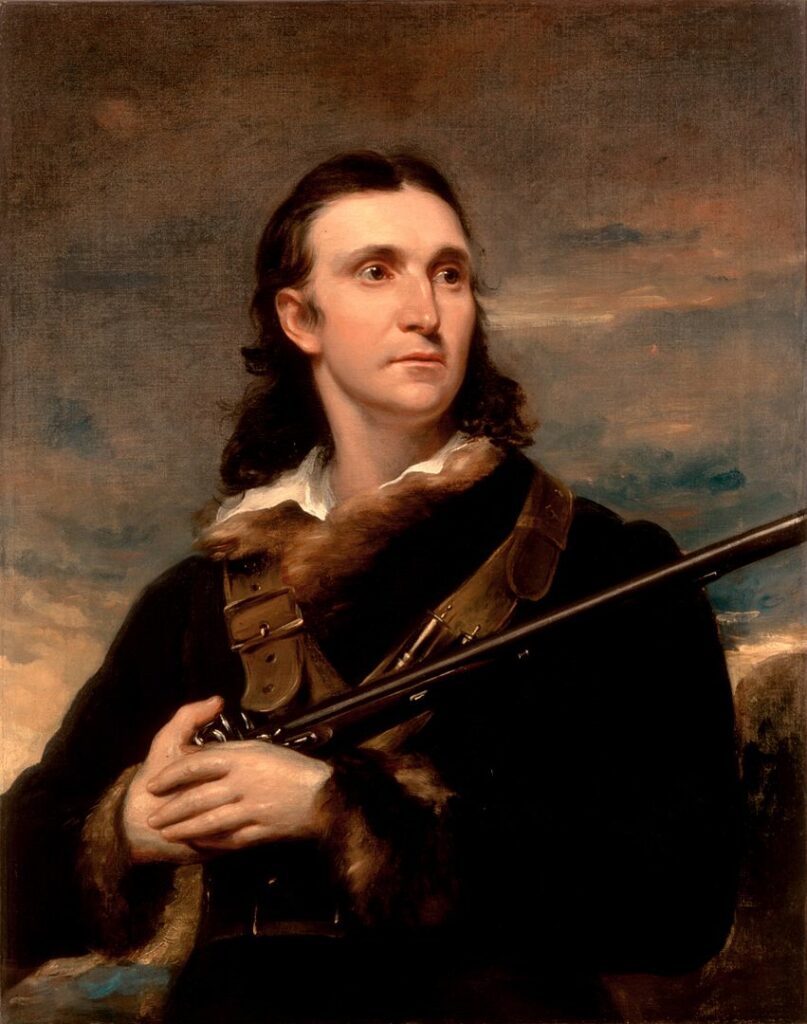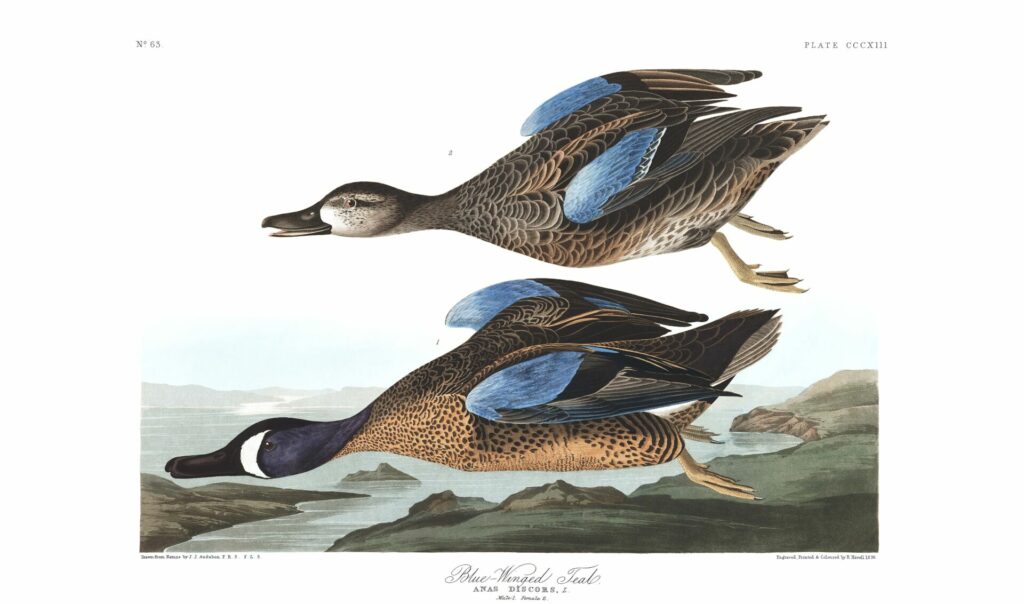Audubon — the man and the meaning
By Ilana DeBare
Who was John James Audubon? Why was the leading U.S. bird conservation organization named after him? Has his meaning as a figurehead changed?
The National Audubon Society board of directors announced this month that, after a year of deliberation, it will not replace the “Audubon” part of its name. But the name debate continues: NAS staff issued a sharp denunciation of the board’s decision, three NAS board members resigned in protest, and a number of chapters such as Seattle, Portland, and Madison are still moving ahead with plans to change their own names.
As the Golden Gate Bird Alliance board deliberates over our own response, it’s a good time to review what we know about John James Audubon—both the man and his meaning.
John James Audubon was a complex character who was known to make up stories about himself. Sometimes it’s hard to know what’s fact and what’s self-serving myth. In addition, the lens through which many of us look at Audubon and his personal history has shifted over the past decade.

The man
Let’s start with one of the most basic facts about someone—their birth. It’s undisputed that John James Audubon was born out of wedlock in 1785 to a French naval officer on the island that now is Haiti. But his mother? Most historians say she was a white French chambermaid who died shortly after childbirth, although a few sources claim she was an enslaved person of color. Audubon himself made up a third and entirely false story, claiming at one point that she was a “lady of Spanish extraction” from Louisiana who was killed in a slave uprising.
Some conservationists have promoted the theory of Audubon having Black ancestry as a way to welcome people of color into the birding community. More recently, the question of his ancestry has been overshadowed by his history as a slave owner and his statements in support of enslavement.
Audubon’s father raised him in France and sent him to Pennsylvania at age 18 to prevent his conscription into the Napoleonic wars. After marrying, he moved to Kentucky, which at the time was part of the country’s western frontier. He started a series of business ventures and failed at just as many. (At one point he went bankrupt and was jailed for debt.)
Audubon was an expert woodsman—good at shooting, orienteering, and swimming. He was also good at fencing, music, dancing, and (according to one person who knew him!) magic tricks. He had a passion for birds and a talent for depicting them.

The artist
Audubon’s artwork was significant in several ways: He depicted birds in a more lifelike and contextual way than other naturalists before him. He used wire to position the skins of dead birds in ways that allowed him to show them “in action,” feeding or flying or nesting.
He introduced Europeans to the bird life of this continent with his giant Birds of North America prints. Audubon was one of only two Americans inducted before the Civil War into the Royal Society of London, the leading scientific organization of its day. (The other was Ben Franklin.)
With four volumes and 435 life-size engravings of 490 species, Birds of North America was an ambitious attempt to document every species of bird found here. Audubon’s images helped establish names and field marks for many of the species we know today. They served as guideposts for generations of naturalists and bird lovers.
At the same time, Audubon saw nothing wrong with killing hundreds of birds in a single day, far more than needed for his modeling.
He saw nothing wrong with supporting his bird artistry and his family through the ownership and trading of slaves.
The slave owner
Audubon had nine enslaved people working in his household and businesses in the 1810s; he later sold them when he needed cash. In early 1819, he took two enslaved men with him down the Mississippi to New Orleans on a skiff, and when he got there, he put the boat and the men up for sale. He acquired several more enslaved people during the 1820s and sold them when he moved to England to seek a publisher for his bird paintings.
In a companion text to Birds of America, he tells a story called The Runaway, about meeting an escaped Black slave with a gun deep in a Louisiana bayou. Audubon describes fearing for his life, but then being treated with great hospitality and charity by the fugitive, who shared his own dinner and gave him a safe place to stay overnight. The man had fled enslavement after his wife and young children were separated and sold off to other distant plantations; he managed to free them and brought them to his camp in the bayou. The next day, after enjoying the family’s hospitality, Audubon reports that he returned the family to their original enslaver, where he says they were “rendered as happy as slaves generally are in that country.”
You can read Audubon’s own words here, on page 267. It’s unclear whether this is a true story or a tall tale aimed at impressing his white European patrons. But either way, it is horrific: Audubon returns a man’s hospitality with re-enslavement, and described this as a praiseworthy response and happy outcome for the enslaved family.
Other strikes against Audubon cited by his critics include theft of skulls from Native American graves, an 1834 letter where he criticized the British government for “act(ing) imprudently and too precipitously” by abolishing slavery in its West Indies colonies, and evidence of fraud/plagiarism in a few instances of his work.
Man of his era?
Defenders of Audubon call him a “man of his times” as a way of excusing his slaveholding. And in many ways he certainly was a man of his times—an era when many white Americans felt entitled to conquer and “civilize” its frontier regions, build fortunes on slave labor, decimate Native American populations, and slaughter wildlife even while extolling its beauty.
In a laudatory 2001 biography, writer Richard Rhodes praised Audubon as the embodiment of an American ideal—the self-reliant, boot-strapping frontiersman. He even titled his book “The Making of an American.”

But social norms and views change, and twenty years after Rhodes’ biography, many Americans look at history differently.
Recent historians point out that those “self-reliant” frontiersmen of American legend were in fact relying on land seized from native people and labor generated by enslaved people.
And while Audubon was a “man of his times,” his path was not the only one he could have chosen. Audubon had many contemporaries who opposed slavery—outspoken Black and white abolitionists like Frederick Douglass, the Grimke sisters, and William Lloyd Garrison, and tens of thousands of anonymous white people who quietly chose not to own slaves for reasons of religion or morality. Audubon’s slave-owning was a choice he made, not something forced upon him.
John James Audubon died in 1851 and the first Audubon Societies didn’t form until about 40 years later. He had nothing to do with their formation: The name was chosen in the 1880s by prominent ornithologist George Grinnell, who had been tutored by Audubon’s widow Lucy and saw Audubon as an inspirational figure.
Grinnell was trying to organize a movement to stop the slaughter of egrets and other birds for feathered hats. His Audubon Society only lasted a couple of years, but the name was revived in the 1890s when women conservationists such as Harriet Hemenway and Minna Hall picked up the baton and launched state Audubon Societies to protect birds. The national organization formed a few years later in 1905.
The questions now faced by Golden Gate Bird Alliance and other Audubon chapters include:
Are the particular choices and values that Audubon embodied ones that we still want to honor?
Does the name “Audubon” advance or hamper our mission of protecting birds in the 21st century?
For more on John James Audubon’s life, see these free online articles:
The Myth of John James Audubon — a critical 2020 profile in Audubon magazine by Gregory Nobles, an emeritus history professor at Georgia Tech and author of John James Audubon: The Nature of the American Woodsman (University of Pennsylvania Press, 2017)
What Do We Do About John James Audubon? — nuanced 2021 essay from Audubon magazine by J. Drew Lanham, a prominent Black ornithologist and endowed faculty at Clemson University, where his work focuses on the intersections among race, place, and nature.
John James Audubon: America’s Rare Bird — a laudatory 2004 profile in Smithsonian magazine by Richard Rhodes, author of John James Audubon: The Making of an American (Vintage Books, 2001).
Hiding in Plain Sight — scholarly article by Roberta Olson about Audubon’s early life, making a strong case that his mother was a white Frenchwoman and NOT an enslaved person of color.
John James Audubon: A Complicated History — short anonymous biography on the National Audubon web site with links to some of the sources critical of Audubon’s life and scholarship.
In addition to these free online articles, Berkeley conservationist Martin Nicolaus this month published a short book called Audubon’s Rifle, which is very critical of Audubon’s hunting and killing of birds. (Note from Ilana: I haven’t read it yet.)
Ilana DeBare is a member of the Golden Gate Bird Alliance Board of Directors. Her debut novel, Shaken Loose, will be published by Hypatia Press in July. Info at ilanadebare.com.
